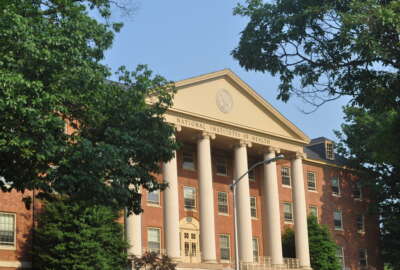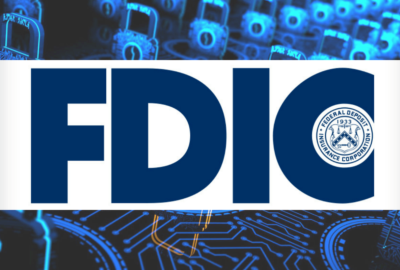NIH explores the world of quantum sensors and how they can help medicine
Federal and industrial quantum computing pioneers have explored something very specific but very important: quantum sensors in biomedicine.
Federal and industrial quantum computing pioneers have explored something very specific but very important: quantum sensors in biomedicine. They’ve done so under the auspices of a nonprofit called the Quantum Economic Development Consortium. Celia Merzbacher, executive director of the consortium, joined the Federal Drive with Tom Temin to discuss why this research is important.
Interview transcript:
Tom Temin: And what is this research all about? I guess we should start with what is a quantum sensor.
Celia Merzbacher: So a quantum sensor takes advantage of the quantum properties of materials, which are very sensitive to their environment. And that’s a challenge sometimes in quantum computers. For instance, you want things to be very stable and isolated from the environment and that’s part of the design and engineering of a quantum computer. But something that’s really sensitive to the environment is, by definition, a good sensor. And so the ability to both sort of set the quantum material into a state that is stable for a long time and sensitive to changes in the environment is at the heart of a quantum sensor. And they can be much more sensitive and detect things at much smaller sizes than conventional sensors, which is some of the attraction, of course.
Tom Temin: And is there a practical version of this yet? Is it something you inject or swallow or paste onto your skin or what?
Celia Merzbacher: Well, there are quantum sensors that have been designed for nonmedical applications and are available today for measuring electric fields, magnetic fields, gravity and things like that. Often those are being used in scientific research today, but that work is leading to understanding and the application for things like biomedicine, which has a long pathway because of regulations and the clinical settings that those applications involve. But they’re coming along quickly and some of the advantages are opening up interest in, particularly, areas like brain imaging and other imaging technologies.
Tom Temin: It sounds like there’s a big engineering component to this because some of the quantum sensors used, say, an aircraft to measure variations in earth phenomena. It’s a pretty big box. And somewhere deep inside, there is a quantum part of it. But you can’t necessarily use that inside the body or does it tend to be something external that just aims at the body?
Celia Merzbacher: Well, there are many different types of quantum sensors and some of them involve large systems. And of course, in clinical settings, MRI machines are very large. In fact, quantum MRI-type technology has the advantage of not requiring such a large system as a conventional MRI, for example. In the case of being able to look inside the body, there are certain types of quantum sensors, those based, for example, on defects in diamonds, which are essentially a very small sized sensor that could be injected into the body or in the lab could be put inside a cell for further study and so on.
Tom Temin: OK. So what was the consortium in this particular project specifically trying to do and we know NIH was one of the partners?
Celia Merzbacher: Yes, we were really pleased to partner with NIH to do this study. It was based on a workshop that was held last year where we brought together experts from the biomedical fields, the people who understand the uses and problems that are faced by the biomedical research community and by quantum experts who understand the technology. And we have a very well-refined process for brainstorming with those experts on what the use cases are, what the problems are, how quantum might be used to address those problems and then to prioritize them and sort of score them on how feasible and what the impact might be so that the NIH and other funders, private funders as well, investors might focus on those that have the greatest impact and are perhaps most feasible in the nearer term.
Tom Temin: We’re speaking with Celia Merzbacher. She’s the executive director of the Quantum Economic Development Consortium. And yes, so you have NIH, also the National Science Foundation as part of this with their Convergence Accelerator program. Tell us something about the partners that are commercial because it’s not just a government and academic group that is in your consortium, but you also have startups it looks like.
Celia Merzbacher: We have a lot of startups and small companies. And in fact, when you look at the companies that are developing sensor technologies today based on quantum science and quantum technology, most of them are small companies or startups and perhaps that’s generally the case in biomedicine. You get someone who has a new idea and is willing to take a chance on that and do some of the early-stage development work, get it to a certain point, reduce the risk and then a larger company might step in and take it to larger scale volume markets and so on. So we had quite a lot of interest among these small startups who are trying to bridge the valley of death. And NIH is very interested in helping that happen. And they’ve announced in September a prize challenge. You can find out more about that by searching the NIH website. Focused specifically on quantum sensors for biomedical applications. So they have used one of their methods for stimulating the research community to look at quantum sensing and quantum computing for biomedical applications.
Tom Temin: A few years ago in Silicon Valley, there was a startup that turned out to be a fraudulent company. But the idea behind it was sensing something in the blood with tiny little samples, only many, many more results than you could get from conventional blood draws. And it wasn’t real. But the idea seems to persist that very tiny amounts of material can give a lot of information. Is that part of what’s behind the quantum sensing idea?
Celia Merzbacher: Well, I think that the big advantage is increased sensitivity. So you can detect things earlier and that’s always a big help in detecting disease and being able to treat it as soon as possible, of course. Then you also have to sort of separate out these small signals from background noise. And sometimes, a small deviation from normal isn’t an illness at all. And so there’s a lot of analysis of those data that will be needed. And in some ways, I think it’s very fortuitous that AI and other methods are coming along at the same time and can be combined with the ability of quantum sensors to generate that kind of data. It will require new forms of algorithms and analysis and that’s where combining it with things like AI might be a real win-win.
Tom Temin: Yeah. I was going to say, it sounds like a combination of not only AI but also high-end signal processing, too.
Celia Merzbacher: Absolutely. And especially when you’re trying to take those small signals and make them into an image and maybe an image with much higher resolution. There’s a lot of engineering on the signal and the analysis side.
Tom Temin: So it sounds like this particular report that you’ve come up with is a way of maybe informing future grantmaking in future actual, like you say, prize competitions to come up with applications and by knowing what’s feasible in the first place.
Celia Merzbacher: Yes, absolutely. The consortium that I lead, the QED-C, was established by the National Quantum Initiative Act by Congress in 2018. And if you go and look at that sort of charter language, it created a consortium of stakeholders to identify use cases and that’s what we’ve done with this study and to look at the gaps that need to be filled. We were resourced to be able to fill the gaps. And so we have to partner with NIH and with the private sector to help inform them about the opportunities, the potential and make them understand. And that’s really on the private investor side. I think a big part of what we are responsible for doing because they just don’t know this technology, they’re not comfortable with it. And so we need to educate the communities that are not quantum-ready or quantum-savvy.
Tom Temin: Well, a lot of it sounds like it’s pretty exotic, optically pumped magnetometers, optical frequency combs and nanodiamonds. I guess you don’t want to give a nanodiamond as a wedding ring, but maybe something for a more specific application.
Celia Merzbacher: Absolutely.
Copyright © 2025 Federal News Network. All rights reserved. This website is not intended for users located within the European Economic Area.
Tom Temin is host of the Federal Drive and has been providing insight on federal technology and management issues for more than 30 years.
Follow @tteminWFED






